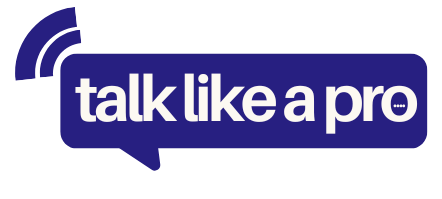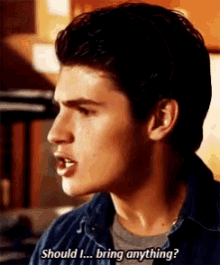Oh boy, the good ol’ “I’m fine” lie – we’ve ALL been there!
Let’s dive into the wild world of passive-aggressive communication, shall we?
By the end of this article, you’ll be a master of the subtle art of letting people know you’re pissed without saying a word.
Trust me, I’ve perfected this skill through years of practice (and therapy bills).
I’ve consulted with body language experts, psychologists, and my perpetually annoyed cat to bring you the ultimate guide to wordless displeasure.
Whether you’re dealing with an oblivious spouse, an irritating coworker, or that one friend who ALWAYS cancels plans last minute, I’ve got you covered.
From the classic eye roll to advanced techniques like “aggressive dishwashing,” we’ll explore it all.
The best part? These methods are totally customizable to fit your personal style of sulking.
So grab your favorite passive-aggressive beverage (may I suggest a loudly slurped coffee?), and let’s get started on your journey to becoming a silent communication ninja!
The “I’m Fine” Paradox: Why We Do It
Ah, the age-old question: Why do we insist on saying “I’m fine” when we’re clearly not?
Well, for starters, it’s a lot easier than explaining why Karen’s comment about your new haircut made you want to shave your head and join a monastery.
But seriously, there are a few reasons we default to this little white lie:
Fear of Conflict
Let’s face it, confrontation is about as appealing as a root canal performed by a squirrel.
We often say “I’m fine” to avoid rocking the boat or starting an argument.
It’s like social bubble wrap – we think it’ll protect us from the sharp edges of conflict.
The “Good Vibes Only” Pressure
In a world obsessed with positivity, admitting you’re not okay can feel like confessing you kick puppies for fun.
We worry that expressing negative emotions will bring everyone down or make us look weak.
News flash: It’s okay to not be okay sometimes. Shocking, I know!
The Martyr Complex
Some of us wear our “I’m fine” like a badge of honor.
We think suffering in silence makes us stronger or more noble.
Spoiler alert: It doesn’t. It just gives you ulcers and a permanent eye twitch.
Emotional Constipation
For some, expressing feelings is about as natural as a cat enjoying a bath.
We’ve been conditioned to bottle up our emotions, leading to a serious case of feeling-constipation.
Time to grab the emotional laxative, folks!
The Silent Symphony: Communicating Without Words
Now that we’ve covered WHY we do this to ourselves, let’s explore HOW to express our displeasure without uttering a single “I’m fine.”
The Face: Your Personal Emoji Board
Your face is like a billboard for your emotions. Use it wisely!
The Eye Roll
Ah, the classic. Perfect for expressing “Are you kidding me?” without saying a word.
Pro tip: Combine with a heavy sigh for maximum impact.
The Raised Eyebrow
The silent judge of facial expressions.
Use this when someone says something so ridiculous, you can’t even dignify it with an eye roll.
The Tight-Lipped Smile
This is the facial equivalent of saying “I’d rather eat glass than continue this conversation.”
Master this, and you’ll never have to fake laugh at your boss’s jokes again.
Body Language: The Silent Screamer
Your body can speak volumes when your mouth is zipped shut.
The Arms Crossed
Universal sign for “I’m closed off and not happy about it.”
Bonus points if you can work in a foot tap for added irritation.
The Exaggerated Sigh
Nothing says “I’m so done” quite like a sigh that could blow out birthday candles from across the room.
The “I’m Busy” Shuffle
Suddenly becoming VERY interested in organizing your desk or phone when someone approaches.
It’s like an invisibility cloak for adults!
The Power of Proximity
Sometimes, it’s not about what you do, but where you position yourself.
The Cold Shoulder
Physically turning away from someone is like hitting them with a freeze ray of displeasure.
The Space Invader
On the flip side, getting uncomfortably close can make your annoyance crystal clear.
Just be prepared for potential restraining orders.
Advanced Techniques: For the Truly Passive-Aggressive
Ready to level up your wordless communication game? Let’s dive into some pro moves.
The Silent Treatment: Classic for a Reason
Ah, the silent treatment. It’s like the little black dress of passive-aggressive behavior – timeless and effective.
But beware! Overuse can lead to relationship frostbite.
Use sparingly, like that fancy perfume you save for special occasions.
The Aggressive Cleaner
Nothing says “I’m upset” quite like furiously cleaning everything in sight.
Bonus points if you “accidentally” vacuum near someone’s feet while they’re trying to watch TV.
The Martyr’s Sigh
This is the verbal equivalent of the “I’m fine” lie.
It’s a deep, soul-crushing sigh followed by “No, no, it’s okay. I’ll do it myself.”
Oscar-worthy performances only, please.
The Petty Perfectionist
Suddenly become VERY particular about how things are done.
“Oh, you loaded the dishwasher? That’s… nice. I’ll just rearrange EVERYTHING.”
The Passive-Aggressive Post-It
Leave notes EVERYWHERE.
“Your laundry misses the hamper. Thought you should know.”
Just don’t go full “A Beautiful Mind” with it.
The Aftermath: Dealing with the Fallout
So you’ve mastered the art of wordless displeasure. Congrats! But what happens next?
The Inevitable Confrontation
Eventually, someone’s going to call you out on your behavior.
Prepare your Oscar-worthy “Who, me?” face now.
The Emotional Hangover
All that pent-up frustration has to go somewhere.
Don’t be surprised if you find yourself ugly-crying over a toilet paper commercial later.
The Relationship Repair
At some point, you’ll need to use your words like a grown-up.
I know, I know – it’s terrifying. But your relationships (and blood pressure) will thank you.
Breaking the Cycle: Communicating Like an Actual Adult
Okay, time for some real talk. While these passive-aggressive techniques can be fun (and sometimes necessary), they’re not a long-term solution.
The Power of “I” Statements
Instead of “You’re so inconsiderate,” try “I feel hurt when…”
It’s less accusatory and more likely to start a real conversation.
Active Listening: It’s Not Just for Therapists
Actually LISTEN to the other person instead of planning your next zinger.
I know, radical concept.
Embrace the Awkward
Honest communication can be uncomfortable. Embrace it like that weird uncle at family reunions.
The temporary discomfort is worth the long-term benefits.
Practice Self-Awareness
Check in with yourself regularly. Are you REALLY “fine,” or are you bottling things up?
Your future self (and therapist) will thank you.
Conclusion: The Fine Art of Not Being “Fine”
So there you have it, folks – your ultimate guide to mastering the “I’m fine” lie and communicating displeasure without words.
Remember, while these techniques can be useful (and admittedly, pretty fun), they’re not a substitute for honest communication.
Use your newfound powers wisely, young padawan.
And the next time someone asks if you’re okay, maybe try something radical – tell the truth!
Who knows? You might start a revolution of honest communication.
Or at least freak people out enough that they stop asking. Win-win!
Now go forth and silently communicate your displeasure like the passive-aggressive ninja you are!
Just don’t blame me when your significant other starts hiding all the cleaning supplies.




